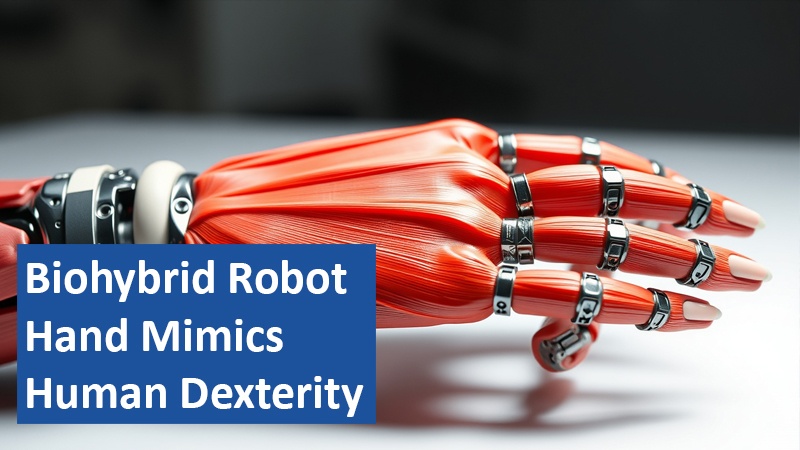
Japanese researchers have developed a groundbreaking biohybrid hand capable of performing complex gestures and manipulating objects. The innovation combines lab-grown muscle tissue with 3D-printed components, potentially revolutionizing the field of prosthetics and robotics. This advancement marks a significant step towards creating more lifelike and functional artificial limbs.
Now exclusively try Amazon Prime and Prime Video free for 30 days!
Sushi-Inspired Muscle Actuators
The team created multiple muscle tissue actuators (MuMuTAs) by bundling thin strands of lab-grown muscle tissue into sushi-like rolls. These MuMuTAs provide the hand with sufficient strength for finger contractions, overcoming previous limitations in growing thick muscle tissue in laboratory conditions. The innovative approach allows for the creation of tendons with enough force to move the hand’s large structure.
Impressive Capabilities
The biohybrid hand, measuring 7 inches in length, features multi-jointed fingers that can move individually or in combination. During tests, the hand successfully formed a scissor gesture and grasped a pipette tip, demonstrating its ability to mimic a range of human-like actions. The fingers are stimulated by electric currents delivered through waterproof cables, showcasing the potential for complex movement control.
Challenges and Future Developments
Despite its achievements, the current design faces some limitations. The hand must be suspended in liquid to allow for smooth finger movements, and the fingers cannot actively return to their starting position. Researchers are working on solutions to these challenges, including the development of a free-moving hand and improved finger control mechanisms.
Implications for Medicine and Robotics
The creation of MuMuTAs represents a significant milestone in biohybrid robotics, opening up new possibilities for advanced prosthetics and medical research. While the field is still in its early stages, this technology could potentially serve as a tool for understanding muscle tissue function in biological systems and aid in testing surgical procedures or drugs targeting muscle tissue. The convergence of biology and engineering presents remarkable opportunities to develop more advanced and personalized prosthetic devices.
This fusion of biological elements and cutting-edge technology highlights the potential for creating more sophisticated and adaptable robotic systems.
As research progresses, how might the integration of biological tissue and robotics reshape our approach to human augmentation and medical treatments?
Based on content from www.sciencedaily.com and own research.